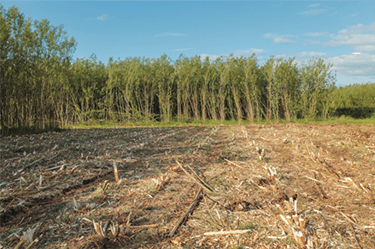
Bioenergy with Carbon Capture and Storage (BECCS) – a controversial technology that proposes to capture the carbon emissions from burning trees and vegetable oils and bury it underground – may not actually remove carbon dioxide (CO2) from the atmosphere and help fight climate change, an academic study published in Nature Communications has found (August 2018).
BECCS has been popular with modellers looking at how the world could limit climate change to 1.5˚C, because it appears both to provide a replacement energy source for high-carbon fossil fuels like coal and oil, and to allow the removal of CO2 from the atmosphere.
However, such models have committed a surprisingly large oversight – they do not consider the damaging effect that cutting forests for bioenergy has on their ability to suck up carbon. In fact the new study found that, in the majority of cases, expanding bioenergy production areas for BECCS would be worse for the climate than simply leaving the forests as they are.
The findings are timely - the European Commission is in the process of preparing its strategy for decarbonising the EU economy by 2050, including how to remove carbon from the atmosphere.
It is important for the EU to avoid the trap of relying heavily on BECCS to generate carbon removals, as the evidence and experience so far suggest it will fail to even deliver this objective – to say nothing of the multiple other risks BECCS carries. For instance, increased bioenergy use has been steadily depleting EU carbon sinks for the past decade, BECCS would require even larger amounts of land, threatening food security. More immediately, the technology has never been proven to work at scale.
The EU should focus instead on promoting solutions that would actually deliver carbon removals, in particular restoring forests, agricultural lands and wetlands so they can absorb more carbon. For more information, see Fern’s new briefings on BECCS and on the positive potential of forest restoration.
